Up on Main Street

The Main Street Lending Program was the last of the facilities launched by the Fed and Treasury to support the flow of credit during the COVID-19 pandemic of 2020-21. The others primarily targeted Wall Street borrowers; Main Street was for smaller firms that rely more on banks for credit. It was a complicated program that worked by purchasing loans and sharing risk with lenders. Despite its delayed launch, Main Street purchased more debt than any other facility and was accelerating when it closed in January 2021. This post first locates Main Street in the constellation of COVID-19 credit programs, then looks in detail at its design and usage with an eye toward any future programs.
Job Seekers’ Beliefs and the Causes of Long‑Term Unemployment

In addition to its terrible human toll, the COVID-19 pandemic has also caused massive disruption in labor markets. In the United States alone, more than 25 million people lost their jobs during the first wave of the pandemic. While many have returned to work since then, a large number have remained unemployed for a prolonged period of time. The number of long-term unemployed (defined as those jobless for twenty-seven weeks or longer) has surged from 1.1 million to almost 4 million. An important concern is that the long-term unemployed face worse employment prospects, but prior work has provided no consensus on what drives this decline in employment prospects. This post discusses new findings using data on elicited beliefs of unemployed job seekers to uncover the forces driving long-term unemployment.
Discretionary and Nondiscretionary Services Expenditures during the COVID‑19 Recession

The coronavirus pandemic and the various measures to address it have led to unprecedented convulsions to the U.S. and global economies. In this post, I examine those extraordinary impacts through the lens of personal consumption expenditures on discretionary and nondiscretionary services, a framework I developed in a 2011 post (and subsequently employed in 2012, 2014, and 2017). In particular, I show that there were exceptional declines in both services categories during the spring; their recoveries, however, have displayed notably different patterns in recent months, with nondiscretionary services expenditures nearly back to their prior level and discretionary services expenditures seemingly stalled well below their pre-pandemic peak.
Understanding the Racial and Income Gap in COVID‑19: Public Transportation and Home Crowding
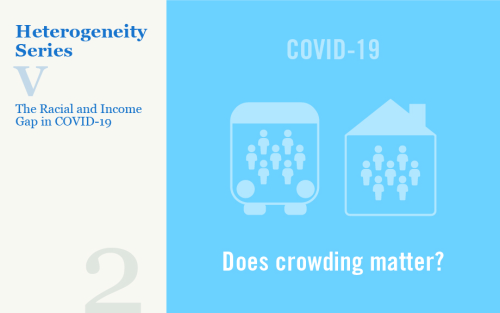
This is the second post in a series that aims to understand the gap in COVID-19 intensity by race and income. In our post yesterday, we looked at how comorbidities, uninsurance rates, and health resources may help to explain the race and income gap observed in COVID-19 intensity. We found that a quarter of the income gap and more than a third of the racial gap in case rates are explained by health status and system factors. In this post, we look at two factors related to indoor density—namely the use of public transportation and increased home crowding. Here, we will aim to understand whether these two factors affect overall COVID-19 intensity, whether the income and racial gaps of COVID can be further explained when we additionally include these factors, and whether and to what extent these factors independently account for income and racial gaps in COVID-19 intensity (without controlling for the factors considered in the other posts in this series).
Understanding the Racial and Income Gap in Covid‑19: Health Insurance, Comorbidities, and Medical Facilities
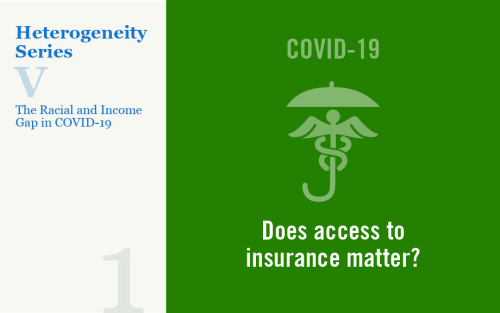
Our previous work documents that low-income and majority-minority areas were considerably more affected by COVID-19, as captured by markedly higher case and death rates. In a four-part series starting with this post, we seek to understand the reasons behind these income and racial disparities. Do disparities in health status translate into disparities in COVID-19 intensity? Does the health system play a role through health insurance and hospital capacity? Can disparities in COVID-19 intensity be explained by high-density, crowded environments? Does social distancing, pollution, or the age composition of the county matter? Does the prevalence of essential service jobs make a difference? This post will focus on the first two questions. The next three posts in this series will focus on the remaining questions. The posts will follow a similar structure. In each post, we will aim to understand whether the factors considered in that post affect overall COVID-19 intensity, whether the racial and income gaps can be further explained when we additionally include the factors in consideration in that post, and whether and to what extent the factors under consideration in that post independently affect racial and income gaps in COVID-19 intensity (without controlling for the factors considered in the other posts in this series).
Understanding the Impact of COVID‑19: The Top Five LSE Posts of 2020
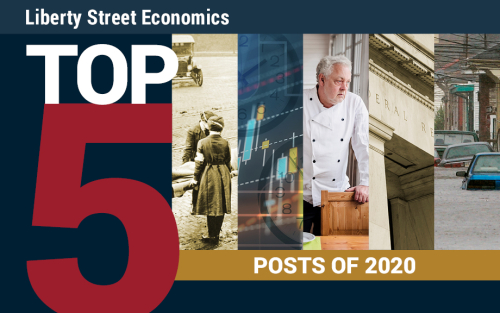
An annual tradition at Liberty Street Economics is to present our most-read posts of the year. Given the events of 2020, New York Fed economists and guest coauthors focused their analysis on the effects of the coronavirus pandemic, writing some seventy articles since March on the subject. Our leading posts, in terms of traffic, all touch on the theme in some way. Consider this space a hub for COVID-19 coverage for some time to come, and take a look back at the top five posts grabbing attention in 2020.
The Regional Economy during the Pandemic
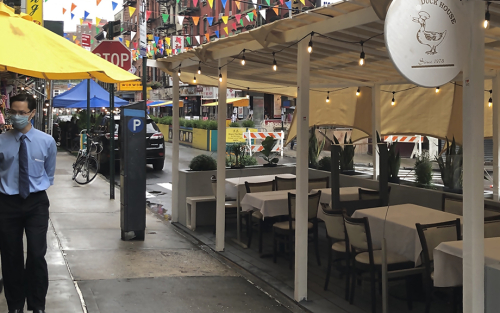
The New York-Northern New Jersey region experienced an unprecedented downturn earlier this year, one more severe than that of the nation, and the region is still struggling to make up the ground that was lost. That is the key takeaway at an economic press briefing held today by the New York Fed examining economic conditions during the pandemic in the Federal Reserve’s Second District. Despite the substantial recovery so far, business activity, consumer spending, and employment are all still well below pre-pandemic levels in much of the region, and fiscal pressures are mounting for state and local governments. Importantly, job losses among lower-income workers and people of color have been particularly consequential. The pace of recovery was already slowing in the region before the most recent surge in coronavirus cases, and we are now seeing signs of renewed weakening as we enter the winter.
The Costs of Corporate Debt Overhang Following the COVID‑19 Outbreak

Leading up to the COVID-19 outbreak, there were growing concerns about corporate sector indebtedness. High levels of borrowing may give rise to a “debt overhang” problem, particularly during downturns, whereby firms forego good investment opportunities because of an inability to raise additional funding. In this post, we show that firms with high levels of borrowing at the onset of the Great Recession underperformed in the following years, compared to similar—but less indebted—firms. These findings, together with early data on the revenue contractions following the COVID-19 outbreak, suggest that debt overhang during the COVID-recession could lead to an up to 10 percent decrease in growth for firms in industries most affected by the economic repercussions of the battle against the outbreak.










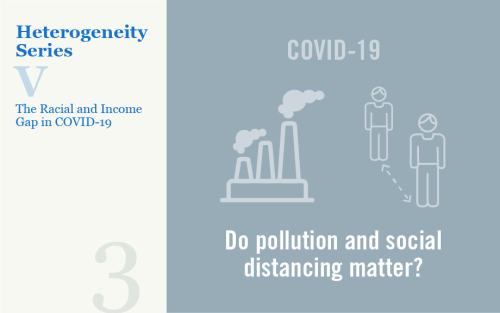
 RSS Feed
RSS Feed Follow Liberty Street Economics
Follow Liberty Street Economics